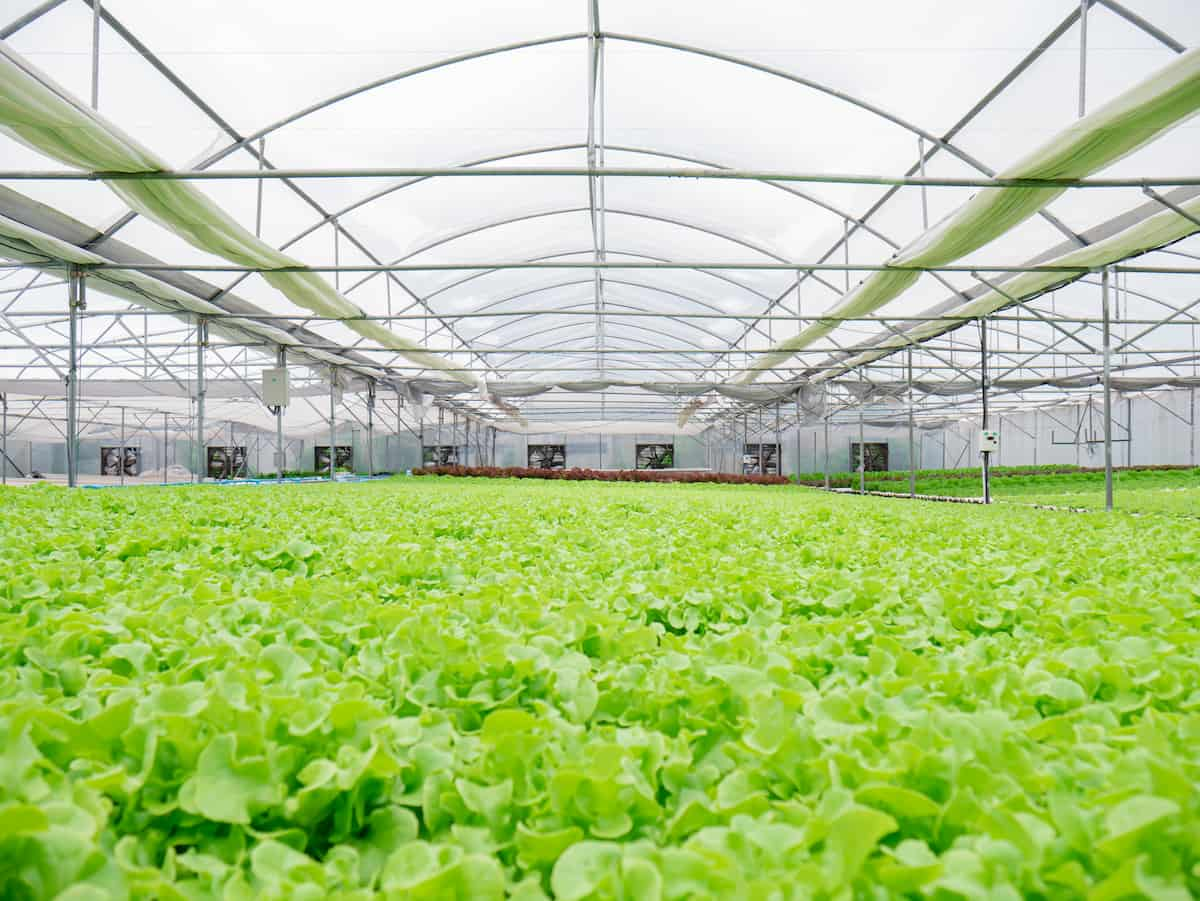Due to concerns about global climate change, many greenhouse farmers are switching to renewable energy as fossil fuel prices and demand rise worldwide. Renewable energy usage instead of fossil fuels result in many environmental, economic, and social benefits, as well as the mitigation of greenhouse gas emissions. The production of various crops in greenhouses requires heat and power.

The heat and electricity needed in greenhouses depend on the local climate, greenhouse construction, and cultivated crop. Generally, most of the energy consumed is for heating. Renewable energy sources have been used to heat greenhouses, including solar, biomass, geothermal, and wind power. For greenhouses to be successful, the availability of the above-mentioned renewable energy sources is crucial. Despite this, greenhouses require electricity for lighting, cooling, and operating various electric devices (e.g., motors, valves, pumps, fans, etc.).
Use of Renewable Energy in Greenhouse Farming
Energy Demands in Greenhouses
Greenhouse energy demands are for maintaining optimal internal microclimatic conditions for plant growth, crop productivity, and off-season cultivation.
Lighting
In agricultural greenhouses, both natural and artificial lighting systems are used to maintain optimal light levels. In greenhouses, supplemental lighting is often used during low light conditions to extend the growing season, regulate plant development, and maintain optimal photosynthesis.
Temperature
Agricultural greenhouses typically consume most of their energy regulating temperature. In greenhouse facades, conventional materials are designed to maximize solar light transmission to crops at the expense of thermal performance. This creates the need for auxiliary heating and cooling systems to maintain an appropriate climate inside the greenhouse.
Humidity
Relative humidity increases when temperature decreases in a greenhouse, and vice versa. Low relative humidity negatively impacts photosynthesis and other physiological processes. However, excessively high humidity can lead to fungal diseases, inhibit flower pollination, and encourage the development of certain crop pests. Heating, ventilation, and air conditioning equipment in greenhouses must maintain ideal humidity levels.
Mechanical Equipment
A fourth major component of agricultural greenhouse energy consumption is mechanical equipment. The crop and cultivation system may include irrigation pumps, sprayers, mechanical harvesters, transplanting machines, potting machines, autoclaves, refrigerators, and other farm equipment.
Types of Renewable Energy Sources Used to Run an Eco-Friendly Greenhouse
Solar Energy for Greenhouses
It was long before scientists began to search for efficient methods to store and use the sun’s energy that greenhouses were used as solar collectors. Solar energy is captured and stored by the greenhouse as a solar collector. Unfortunately, the heat retained in the greenhouse is insufficient to maintain a comfortable temperature during the long winter nights. Some heat requirements at night can be met by storing solar energy collected during the day. Solar energy storage technologies can be active or passive depending on how solar energy is captured, converted, and distributed.
In case you missed it: Benefits of Goat Manure Fertilizer in Agriculture and How to Apply

Active Solar Techniques
Active solar heating systems use solar energy to heat liquid or air-fluid, which is then transferred to the interior space or stored for later use. Fans distribute the heat collected by air-based systems; pumps distribute the heat collected by liquid-based systems. When the sun is not out, active systems have an energy storage system that provides heat.
Passive Solar Techniques
Passive solar heating can most efficiently obtain greenhouse heat. Solar energy falls on the roof of a greenhouse more than the greenhouse consumes in total. A passive solar system, when incorporated into the initial building design, reduces operational costs and equipment demands while adding little or no to the cost of the building. Besides being reliable, it is mechanically simple and a viable greenhouse asset.
Solar Heat Storage
During cool nights or cloudy days, solar greenhouses must store solar heat that enters on sunny days for later use. Solar energy is most commonly stored by directly placing rocks, concrete, or water in sunlight to absorb heat. Heat can also be stored in brick or concrete-filled cinder block walls at the back (north side) of greenhouses. Heat is effectively absorbed only by the outer four inches of this storage material.
Biomass Energy for Greenhouses
An organic fuel, biomass is a renewable and also sustainable energy source used to generate electricity and other forms of power. Bioenergy is carbon-neutral electricity produced from organic waste that would otherwise end up in landfills, burnt openly, or used as fuel for forest fires. Agricultural and forestry residues, industrial wastes, and crops are grown solely for energy and can be used to create biomass.
Biomass Boilers and Furnaces
- There are two main types of biomass boilers and furnaces: those that require manual stoking or loading and those that require automatic stoking.
- Cordwood or waste wood is the most common fuel for manually stoked boilers and furnaces.
- Wood chips, wood pellets, biomass pellets (grass, corn fodder, etc.), paper pellets, and grains (corn, rye, and other small grains) can all be used in automatic-stoking boilers and furnaces.
Geothermal Energy for Greenhouses
- Geothermal energy is the heat that comes from the Earth. This is a clean, sustainable energy source.
- Several types of geothermal energy sources include shallow ground, hot water, hot rock, and even magma, which is molten rock at extremely high temperatures.
- A nearly constant temperature of 10°C to 16°C can be found almost everywhere on Earth’s surface under shallow ground.
- For heating and cooling greenhouses, geothermal heat pumps can tap into this resource.
Wind Energy for Greenhouses
- Electricity produced by wind turbines can provide a significant portion of a greenhouse’s energy needs. High winds, however, are required for their location.
- It is common for coastal, mountainous, and Central Plains areas to experience higher wind speeds, which makes them more attractive as generating sites.
- Local topology, vegetation, and building structures affect the average wind speed.
- Assess the suitability of a site for wind generation based on local wind speed measurements.
- The average wind speed required for economic wind power is 9 mph for small wind generators and 13 mph for large generators.
In case you missed it: Top 10 Applications of Artificial Intelligence (AI) in Agriculture

Conclusion
Agricultural greenhouses can be used efficiently on various agricultural lands, providing ideal conditions for short-term plant growth, thus increasing local vegetable and fruit production. A bio-organic greenhouse based on alternative heat and electricity sources is a smart choice for the sustainable development of agriculture, ensuring good growth and development of plants in all seasons, especially during cold weather.
- Feed Your Flock for Less: Top 10 Tips to Save on Chicken Feed
- Ultimate Guide to Ossabaw Island Hog: Breeding, Raising, Diet, and Care
- Hatching Answers: The Top 10 Reasons Your Chickens Aren’t Laying Eggs
- Eggs and Economics: Breaking Down the Cost of Raising Backyard Chickens
- Defend Your Greens: Proven Methods to Keep Iguanas Out of Your Garden
- Ultimate Guide to Cinnamon Queen Chicken: A Comprehensive Guide for Beginners
- Ultimate Guide to California Tan Chicken: Breeding, Raising, Diet, Egg-Production and Care
- Ultimate Guide to Marsh Daisy Chicken: Breeding, Raising, Diet, and Care
- 10 Types of Chicken Farming Businesses You Can Start for Profits